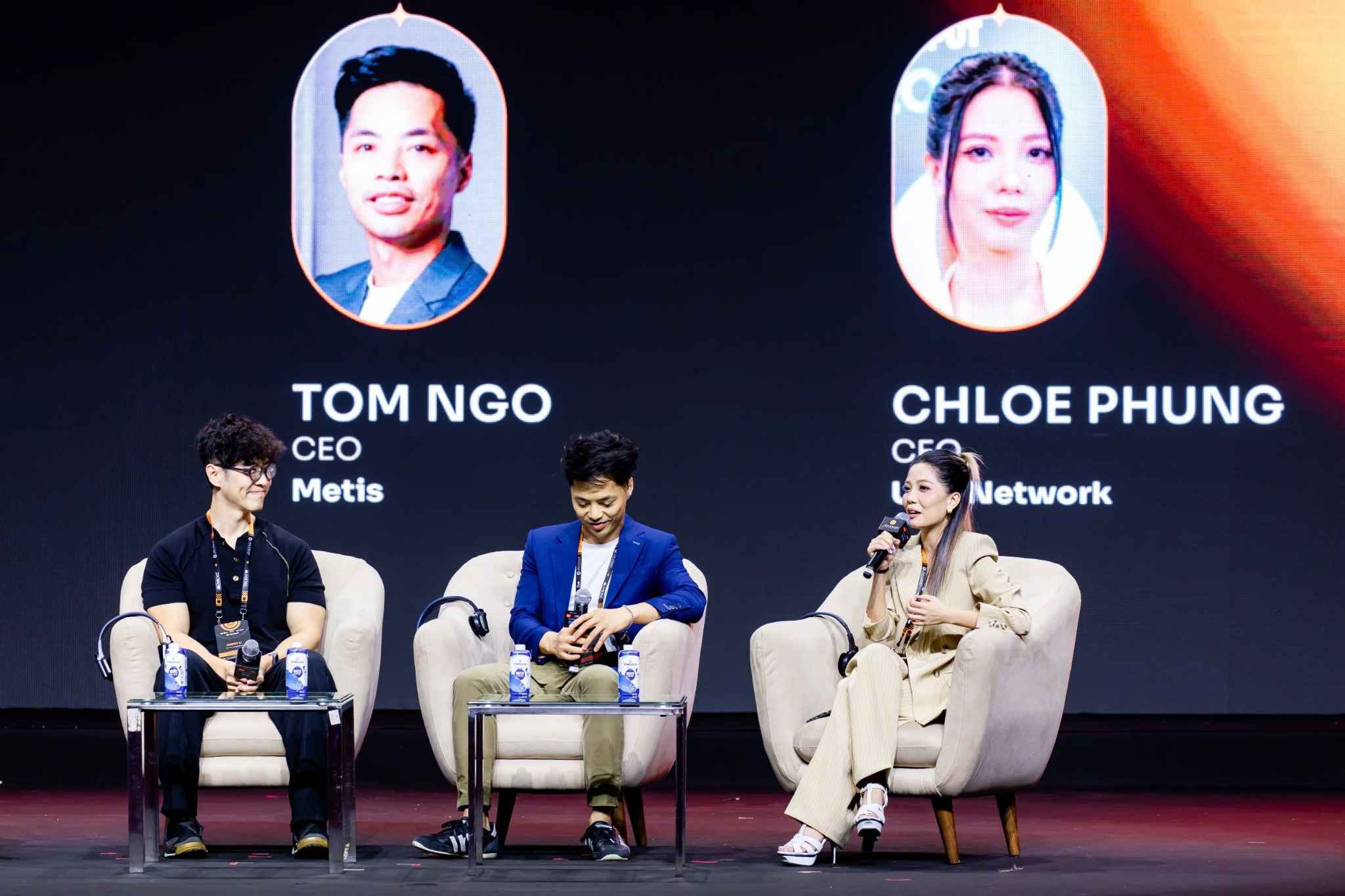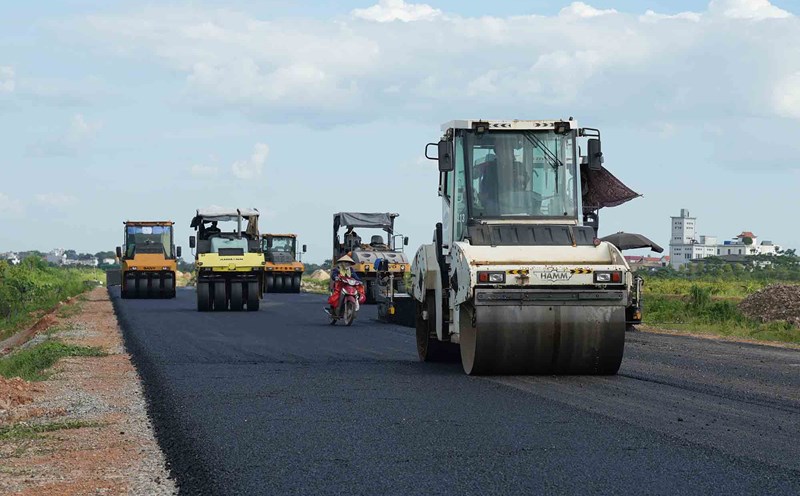No longer a story of the future, blockchain applications are goingides into businesses. Representatives from the country and abroad brought many practical stories, demonstrating blockchain applications right at the event blockchain, digital assets and leading investment technology in Asia - GM Vietnam 2025 which took place over the past 2 days, August 1-2.

To better understand this topic, Ms. Trang Phung - CEO of U2U Network, the blockchain platform Layer-1, ranked top 3 in the world in the field of DePIN - answered an interview on the sidelines of the GM Vietnam 2025 event.
U2U Network is making efforts to bring blockchain applications to many fields. Can you share more about this orientation and which field has the most potential application?
- When we started developing U2U Network, we realized that the demand for blockchain applications did not only come from Web2/Web3 startups but also from traditional businesses - especially those that operate multiple devices, have large data systems or depend on expensive digital infrastructure such as security or distributed data.
Typically, manufacturing companies, technology companies, IoT, smart devices and even businesses operating drones, buses or logistics systems. They are all facing very high software operating costs, sometimes accounting for up to 30% of revenue. Blockchain, if implemented properly, can significantly reduce this cost thanks to a decentralized infrastructure model, no central server requirements, high security, and especially flexible expansion capabilities.
Not only technology or manufacturing companies, even in the financial sector, such as securities companies or exchanges, can also apply blockchain to improve operational efficiency. Industries that need to trace the origin of products are also starting to implement.
For example, Nibula, a US-based company with more than 10 years of experience providing weather data to the agricultural sector and some government agencies, sees blockchain, especially the decentralized app (d App) solution, significantly reducing operating costs. Instead of placing a few large weather stations, they deploy a series of miniature stations, which can even be installed on the roofs of households. The collected data is transferred directly to blockchain, ensuring transparency and dissemination.
Another example is the software for analyzing routes for buses, drones and mobile devices that are also directly operated on the U2U Network platform. This software continuously collects data from the device, including location, fuel consumption, and CO2 emissions to evaluate and optimize the roadmap in real time. Thanks to that, businesses not only save operating costs but can also proactively manage carbon emissions - an increasingly important factor in ESG standards.
In Vietnam, we are also developing financial products for securities companies and many other units. This solution not only helps reduce operating costs but also minimizes system congestion or transaction interruptions during working hours - which will not happen on blockchain.

Technology companies or young startups are very dynamic and knowledgeable, while U2U must convince traditional businesses to see the benefits of applying blockchain. So what is U2U's strategy?
- Young startups access blockchain very quickly, but to make this technology more and more valuable, we need to conquer the entire traditional business sector, which holds most of the infrastructure and data.
Unlike startups, large businesses will have less space to trial - error. So the first step is to help them understand what blockchain is - a new layer of infrastructure that helps save costs, make operations transparent and improve the reliability of the system.
When working with a bank or a logistics company, I do not start with theory. I gave specific case studies, for example, how a unit uses blockchain to monitor the supply chain in real time without a complex ERP system. From there, I suggested that they experiment on a small scale, such as putting a separate product or process on the blockchain, to see clear efficiency before a comprehensive transformation.
In the near future, U2U will promote cooperation with digital transformation consulting units, solution integrators and software development units to "speak the same language" with businesses. We do not simply sell technology, but accompany from the feasibility assessment and testing stages to implementation and optimization according to the characteristics of each industry.
U2U's strategy is not to impose blockchain on businesses but to bring businesses to the point where they see blockchain as an inevitable choice.

What barriers are Vietnamese enterprises facing in the process of applying new technologies such as blockchain?
- I think each group of businesses will face different barriers when approaching new technologies such as blockchain. For large enterprises, the challenge does not lie in technology, but lies in the " system heritage" - software, infrastructure and processes that are too massive and bulky. The transition to blockchain requires a lot of caution and careful calculation.
Another barrier comes from personnel. In many traditional companies, especially long-term units, management teams often do not have a deep understanding of new technology. Therefore, businesses themselves also need to transform from within, think openly, and be ready to receive technology.
In addition, in the Vietnamese market, technology consulting firms are still at a very early stage to advise on the proper implementation of blockchain. Therefore, in addition to traditional businesses needing appropriate strategies and human resources, domestic technology consulting units must also equip themselves with more knowledge, introduce more about blockchain applications, and even test to prove their effectiveness. When there is that support, businesses will confidently experiment and gradually operate products on blockchain.
What strengths do U2U have to shorten their approach?
- Our biggest strength is understanding that the Vietnamese market is not only from the perspective of a solution provider, but also of the people involved. U2U was founded and developed by Vietnamese people, but the technology standard we built is to serve the global market. Although many international partners have used U2U's services, we consider conquering the domestic market as a fundamental goal
U2U's next strength is the technological capacity to be flexible enough to " won locally" each solution. With the Subnet architecture, we can design a separate blockchain network for each business, customize it according to processes, data, or specific security requirements, instead of forcing them to adapt to a common platform as often applied by foreign solutions.
In the coming time, we will further promote information sharing with traditional businesses about how blockchain can solve their specific problems. Of course, to realize this goal, businesses themselves also need open personnel, ready to absorb new technology and work with us to clearly identify problems as well as appropriate solutions. Each business has its own problem, so it is not possible to apply a common solution to all.
This will be a long journey, what will U2U do to support themselves until the company's "piece of cake" is expanded?
- We always clearly identify: to travel long distances, we must first live well. We have chosen to focus on areas that are ready to apply blockchain as soon as possible, thereby creating a stable revenue flow, then moving towards conquering slower transforming industries.
Currently, we prioritize supporting Web2 startups. These are young businesses, technology- sensitive, easy to access and accept testing. At the same time, we are still developing solutions to gradually blockchain traditional businesses.
According to research, in addition to the ambition to expand blockchain applications, U2U is also integrating with the ESG trend, can you share more about this orientation?
- In the world, both ESG and blockchain are quite new, and even more new when connected together. But I believe that these are two tools that can complement each other to solve the biggest problem of today's businesses: sustainable development with a clear and transparent database.
There have been many case studies in the world showing that blockchain can completely support ESG. For example, a startup in Germany is currently collaborating with us. Their software not only measures the distance traveled by the vehicle but also calculates the amount of CO2 emissions. These are typical applications that we have been implementing on U2U Network, directly linked to ESG, to bring practical value to businesses.
Many large steel or cement corporations are still mainly tracking emission data using Excel, manual and unoptimized spreadsheets. The problem is how to apply blockchain to digitize processes, making them easy to access and see the benefits.
In my opinion, the first step is to develop applications at the application layer, without having to build infrastructure from the beginning. Businesses can push data emissions onto blockchain and display results on an intuitive platform. From there, they can easily analyze data and make appropriate decisions in ESG management.
U2U chose to approach ESG not with a slogan, but with a specific product. We do not expect blockchain to change ESG thinking in one go yet but certainly, with good tools, businesses will move faster on this journey.
Regarding the future, what do you imagine as the challenge to affirm that blockchain is worthy of the role of one of the 11 pillars of the digital economy as positioned by the Government?
- I believe that, when the Government identifies blockchain as one of the 11 pillars of the digital economy, it is not a statement following trends but the result of research, learning and observing countries before, where blockchain has proven its practical value in public administration, logistics, finance, and even ESG.
But for blockchain to truly worthy its role, the biggest challenge lies not in technology but in practical implementation. We need to be ready to enter the stage of having specific products, having real users, and having measurable data.
A very practical direction is to launch pilot projects (pilot) in many different industries - from finance, transportation, to manufacturing or agriculture. These projects should be supported in terms of policies, legal aspects and communication to create a real testing space. After 6-12 months, if the results are positive, we will have a solid foundation to expand.
To do that, the Government needs to play the role of "paving the way": creating a flexible legal corridor, allowing controlled testing. At the same time, businesses must also be bolder. Successful pioneers will be the first to benefit: reduced costs, increased business efficiency, and consolidated market position.
Thank you for participating in the interview!











